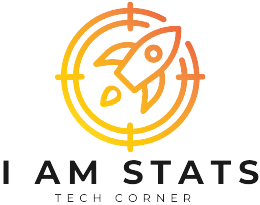Welcome to the world of technology, where complex terms and jargon can sometimes leave you feeling puzzled and overwhelmed. But fear not! In this guide, we will help you navigate through the Tech Jargon Jumble by decoding the language that often accompanies it. Whether you’re a tech enthusiast or just starting to dip your toes into the digital realm, this comprehensive glossary will demystify the tech jargon and empower you with the knowledge you need to stay ahead.
From acronyms like AI (Artificial Intelligence) and IoT (Internet of Things) to internet memes and cybersecurity terms, we’ve got you covered. So, let’s dive in and unravel the mysteries together!
Key Takeaways:
- Technology is often accompanied by complex jargon that can be confusing for newcomers.
- Understanding tech acronyms like AI and IoT is essential for staying informed in today’s digital world.
- The language of the internet, including memes and trolls, plays a significant role in online communication.
- Cybersecurity terms like phishing and firewalls are crucial for protecting your digital assets.
- Stay up-to-date with emerging tech terms to understand the latest technological advancements.
Understanding Tech Acronyms – AI and IoT
In the ever-evolving landscape of technology, understanding tech acronyms is essential. It’s time to demystify the jargon and gain a solid grasp of two of the most popular acronyms: AI and IoT.
Artificial Intelligence (AI): Unleashing the Power of Machines
AI refers to the development of intelligent machines that can perform tasks that typically require human intelligence. From speech recognition to image processing and decision-making, AI has revolutionized various industries, driving innovation and efficiency. It enables machines to learn from experiences, adapt to new situations, and continually improve their performance.
“AI is the electricity of the future.” – Andrew Ng
Embraced by tech giants like Google, Amazon, and Microsoft, AI is the driving force behind virtual assistants, autonomous vehicles, and predictive analytics. With its vast potential, AI is transforming the way we live and work, enhancing productivity and creating new possibilities.
Internet of Things (IoT): Connecting the World Around Us
The IoT refers to the network of physical devices embedded with sensors, software, and connectivity to exchange data and interact with their environment. It enables objects such as appliances, vehicles, and buildings to collect and share information, making them “smart” and interconnected.
IoT devices play a crucial role in creating intelligent ecosystems, enabling seamless communication between devices and humans. From smart homes and wearable devices to industrial applications, the IoT has permeated various domains, revolutionizing how we interact with our surroundings.
Understandably, AI and IoT often go hand in hand, leveraging each other’s capabilities to deliver groundbreaking solutions. They form the foundation of numerous technological advancements, paving the way for automation, efficient resource management, and unprecedented connectivity.
| AI | IoT |
|---|---|
| 1. Artificial Intelligence enables machines to perform tasks that typically require human intelligence. | 1. The Internet of Things connects physical devices, enabling them to collect and share data. |
| 2. AI has applications in diverse fields, such as healthcare, finance, and manufacturing. | 2. The IoT facilitates efficient resource management, automation, and predictive maintenance. |
| 3. Machine learning and deep learning are subfields of AI. | 3. IoT devices, such as smart thermostats and wearables, enhance our daily lives. |
By understanding these tech acronyms, you’ll be equipped to comprehend the latest advancements, have informed discussions, and harness the potential of AI and IoT in our ever-connected digital world.
The Language of the Internet: Memes, Trolls, and More
Dive into the vibrant world of internet culture and familiarize yourself with the language of the internet. The internet has its own unique lexicon, filled with terms like memes and trolls that have become an integral part of online communication.
Memes are a form of internet culture that spread rapidly through social media platforms. They are humorous images, videos, or text that convey relatable ideas and emotions. Whether it’s a funny cat video or a sarcastic caption on a popular image, memes are a creative way for internet users to express themselves and connect with others.
Trolls, on the other hand, are individuals who intentionally provoke and disrupt online communities. These individuals often leave inflammatory comments or engage in online arguments for their own amusement or to incite reactions from others. Trolling can be seen as a negative aspect of online culture, but it has also sparked its own form of humor and community bonding.
Understanding and using these internet-specific terms can help you navigate online interactions and fully immerse yourself in the language of the internet. Before you know it, you’ll be “lol-ing” at memes and “smh-ing” at trolls like a seasoned netizen.
The Impact of Memes and Trolls
Memes have become a ubiquitous form of internet communication, with their influence reaching far beyond the online world. Memes often reflect societal trends, capture pop culture moments, and even become part of marketing campaigns. Brands and public figures now incorporate memes into their content to engage with younger audiences and stay relevant in the digital age.
“Memetics” is the study of memes and their impact on culture. Memes have the power to shape and spread ideas, reflecting the collective consciousness of internet users and influencing mainstream culture.
Trolls, while often perceived as disruptive, have also influenced the evolution of online communities and social norms. They have prompted discussions around online etiquette, moderation, and the boundaries of free speech. Online platforms now employ various strategies to combat trolling behaviors and create safer online spaces for users to express themselves.
Embracing Internet Culture
Internet culture is constantly evolving, and staying up to date with the latest trends and references can help you feel more connected to the online community. Whether it’s using popular internet slang, participating in meme-sharing, or engaging in online discussions, embracing the language of the internet can enhance your online experiences and foster connections with like-minded individuals.
So, immerse yourself in the language of the internet, explore the world of memes and trolls, and discover new ways to express yourself and engage with others online. Remember, trolling, memes, and the language of the internet are all part of the dynamic and ever-evolving online culture.
From Phishing to Firewalls: Cybersecurity Explained
Protecting your digital assets should be a top priority in the ever-evolving landscape of online threats. Understanding essential cybersecurity terms is crucial in safeguarding your privacy and security. In this section, we will explore key concepts such as phishing and firewalls, providing you with the knowledge to stay vigilant in the face of cyberattacks.
Phishing: Recognizing and Avoiding Online Scams
Phishing is a malicious practice where attackers pose as trustworthy entities to deceive individuals into revealing sensitive information such as login credentials, credit card details, or personal data. Phishing attacks are often delivered through emails, text messages, or fraudulent websites designed to mimic legitimate sources.
To protect yourself from phishing attempts:
- Be cautious of unsolicited emails or messages asking for personal information.
- Verify the authenticity of websites before entering sensitive data.
- Keep your devices and software updated to minimize vulnerabilities.
- Implement strong and unique passwords for your online accounts.
By following these precautions, you can significantly reduce the risk of falling victim to phishing attacks and protect your digital identity.
Firewalls: Creating a Secure Digital Perimeter
A firewall acts as a barrier between your internal network and external threats, monitoring and controlling incoming and outgoing network traffic based on predefined security rules. It serves as your first line of defense against unauthorized access and potential intrusions.
Key features of firewalls include:
- Packet Filtering: Examines data packets to determine whether to allow or block them based on defined rules.
- Application Layer Filtering: Analyzes the content of network traffic at an application level, providing granular control over specific protocols or applications.
- Stateful Inspection: Evaluates the context of network connections to identify malicious activities or unauthorized access attempts.
- Virtual Private Networks (VPNs): Encrypts data transmitted over the network, ensuring secure remote access and communication.
Implementing firewalls, both at the network level and on individual devices, is imperative for maintaining the security of your digital infrastructure. Firewalls establish a secure perimeter, allowing only authorized communication and defending against potential cyber threats.
Now that you have a better understanding of phishing and firewalls, you are equipped to navigate the complexities of cybersecurity. Stay informed, remain vigilant, and take proactive steps to safeguard your digital assets from online threats.
Emerging Tech Terms You Need to Know
Stay up-to-date with the latest technological advancements by exploring the emerging tech terms that are making waves in various industries. As technology continues to evolve at a rapid pace, it’s essential to familiarize yourself with these innovative concepts that have the potential to shape the future.
1. Blockchain
Blockchain is a decentralized and transparent system that records transactions securely. It is the underlying technology behind cryptocurrencies like Bitcoin and has applications beyond digital currencies, such as supply chain management and secure data storage.
2. Virtual Reality (VR)
Virtual Reality (VR) immerses users in a simulated environment, often through the use of headsets or special equipment. VR is transforming industries like gaming, entertainment, and education, providing immersive and interactive experiences.
3. Quantum Computing
Quantum Computing utilizes the principles of quantum mechanics to perform complex calculations at a speed unimaginable by traditional computers. It has the potential to revolutionize fields like cryptography, drug discovery, and optimization problems.
4. Internet of Things (IoT)
The Internet of Things (IoT) refers to the network of interconnected devices that can communicate and share data over the internet. This technology enables seamless integration between the physical and digital worlds, with applications ranging from smart homes to industrial automation.
5. Artificial Intelligence (AI)
Artificial Intelligence (AI) encompasses technologies that enable machines to mimic human intelligence and perform tasks that typically require human cognition. AI is powering innovations in fields like healthcare, autonomous vehicles, and personalized experiences.
| Term | Definition |
|---|---|
| Blockchain | A decentralized and transparent system that securely records transactions. |
| Virtual Reality (VR) | Technology that immerses users in a simulated environment through headsets or special equipment. |
| Quantum Computing | Utilizes the principles of quantum mechanics to perform complex calculations at an unprecedented speed. |
| Internet of Things (IoT) | A network of interconnected devices that can communicate and share data over the internet. |
| Artificial Intelligence (AI) | Enables machines to mimic human intelligence and perform tasks that require human cognition. |
By familiarizing yourself with these emerging tech terms, you can better understand the advancements shaping our world and stay ahead in an increasingly technology-driven landscape.
Navigating Tech Talk: Tips for Beginners
Are you a beginner in the world of technology, feeling overwhelmed by all the technical jargon and conversations? Don’t worry! We’ve got you covered with some useful tips to help you navigate through tech talk with confidence.
1. Ask the right questions: When faced with unfamiliar terms or concepts, don’t hesitate to ask questions. Tech-savvy individuals are often more than happy to explain things in simpler terms. Remember, there are no dumb questions!
2. Understand technical concepts: Take the time to educate yourself about various technical concepts. Research and read articles, watch tutorial videos, or enroll in online courses to enhance your understanding. Building a solid foundation will empower you to participate in tech discussions more effectively.
3. Communicate effectively: Clear communication is key to engaging in meaningful tech conversations. Use simple language, avoid jargon when possible, and ensure your message is concise and coherent. Be an active listener and ask for clarification whenever needed.
4. Stay informed: Technology is a rapidly evolving field, and it’s essential to stay updated on the latest trends and developments. Subscribe to tech blogs, follow experts on social media platforms, and attend tech conferences or webinars. This will help you stay current and actively contribute to tech discussions.
“By asking questions, educating yourself, communicating effectively, and staying informed, you’ll soon find yourself comfortably navigating tech talk and engaging in meaningful conversations with tech enthusiasts.”
Remember: Be patient with yourself. Navigating tech talk may seem daunting at first, but with practice and persistence, you’ll gain the confidence to discuss tech topics with ease. Don’t be afraid to step out of your comfort zone and embrace the exciting world of technology!
A Glossary for the Uninitiated
Are you often left feeling confused and overwhelmed by the vast array of tech terms and jargon? Don’t worry, we’ve got you covered. In this section, we provide a comprehensive glossary that will decode the mysteries of tech language and help you understand the concepts with ease.
A glossary for the uninitiated serves as your go-to resource to unravel the complexities of the tech world. Whether you encounter unfamiliar terms while reading tech articles, engaging in discussions, or listening to tech enthusiasts, this glossary will be your trusty guide.
“Technology can be intimidating when you’re not familiar with the terminology. Our glossary is designed to bridge the knowledge gap and empower you to confidently navigate the world of tech.”
From basic terms like HTML and CSS, to more complex jargon such as cloud computing and big data, our glossary covers a wide range of tech topics. Each entry provides a clear and concise definition along with relevant examples that illustrate the concept in practical terms.
Take a look at some of the key terms you’ll find in our glossary:
- HTML: Hypertext Markup Language, the standard markup language used for creating web pages.
- CSS: Cascading Style Sheets, a stylesheet language used for describing the presentation of a document written in HTML.
- Cloud Computing: The delivery of computing services over the internet, including servers, storage, databases, networking, and software.
- Big Data: Large and complex data sets that require specialized processing techniques to extract meaningful insights.
- API: Application Programming Interface, a set of rules and protocols that allows different software applications to communicate and interact with each other.
- Machine Learning: A branch of artificial intelligence that enables computers to learn and make predictions or decisions without being explicitly programmed.
By referring to our glossary, you’ll be equipped with the knowledge to participate in tech conversations, understand tech articles, and make informed decisions about the latest technologies.
So, bookmark this glossary and let it be your trusted companion on your journey to becoming tech-savvy. With our glossary for the uninitiated, you’ll be able to navigate the tech landscape with confidence.
Conclusion
Congratulations on completing your journey through the Tech Jargon Jumble! By decoding the complex tech jargon, you’ve gained a deeper understanding and confidence in navigating the ever-evolving world of technology.
Armed with this knowledge, you can now explore, discuss, and utilize technology with ease in both your personal and professional life. No longer will you be intimidated by tech acronyms like AI and IoT, or puzzled by internet memes and trolls.
Remember to stay updated on emerging tech terms that are reshaping industries, and prioritize cybersecurity measures such as recognizing phishing attempts and utilizing firewalls.
With your newfound ability to navigate tech talk and ask the right questions, you can actively participate in discussions and make informed decisions about the tech tools and advancements that impact your life.
Now that you’re equipped with a comprehensive glossary and a deeper understanding of tech jargon, you can confidently unravel the mysteries of the tech world. Embrace the possibilities and enjoy your tech-filled journey!







